Learn how to make the best authentic Thai Panang curry paste recipe with two easy methods. Experience intense aromatic and fresh flavors like never before in Thai curry pastes!

Once you finish the Panang curry paste, use it immediately to make this authentic Thai Panang curry recipe. It's an easy and delightful curry full of sweet, rich creaminess. Serve your delicious Panang curry with Jasmine rice for best tasting results.
Jump to:
- What is Panang curry paste?
- What is Panang curry?
- Ingredients for homemade curry paste
- How to make your Panang Curry paste
- Helpful kitchen notes and tips
- Variations
- Storage
- Substitutes
- Helpful kitchen tools for making Panag curry paste
- Frequently Asked Questions
- More Thai recipes to try
- The Best Authentic Thai Panang Curry Paste Recipe
- Related
- Pairing
What is Panang curry paste?
Panang curry paste (พริกแกงพะแนง) is a curry base for the popular Thai Panang curry, light and mild curry that is loved by locals and foreigners alike. Panang curry paste has aromatic herbs and dried spices that combine to make a fragrant and tasty curry paste. The added crushed peanuts give the paste a nutty and creamy flavor that balances the salty and lightly spicy curry paste.
What is Panang curry?
Panang curry is a delicious Thai curry usually made with minimal ingredients to keep it simple and allow the flavor of each ingredient to shine. The curry can be made with pork, beef, or chicken. Fish is not as commonly used but can be used for vegetarians or non-meat eaters. Some Panang curries are on the thick creamy side, while others are on the brothy side. Try this beef Panang curry recipe that leans more creamy with coconut milk and crushed peanuts.
Ingredients for homemade curry paste
Dried spices
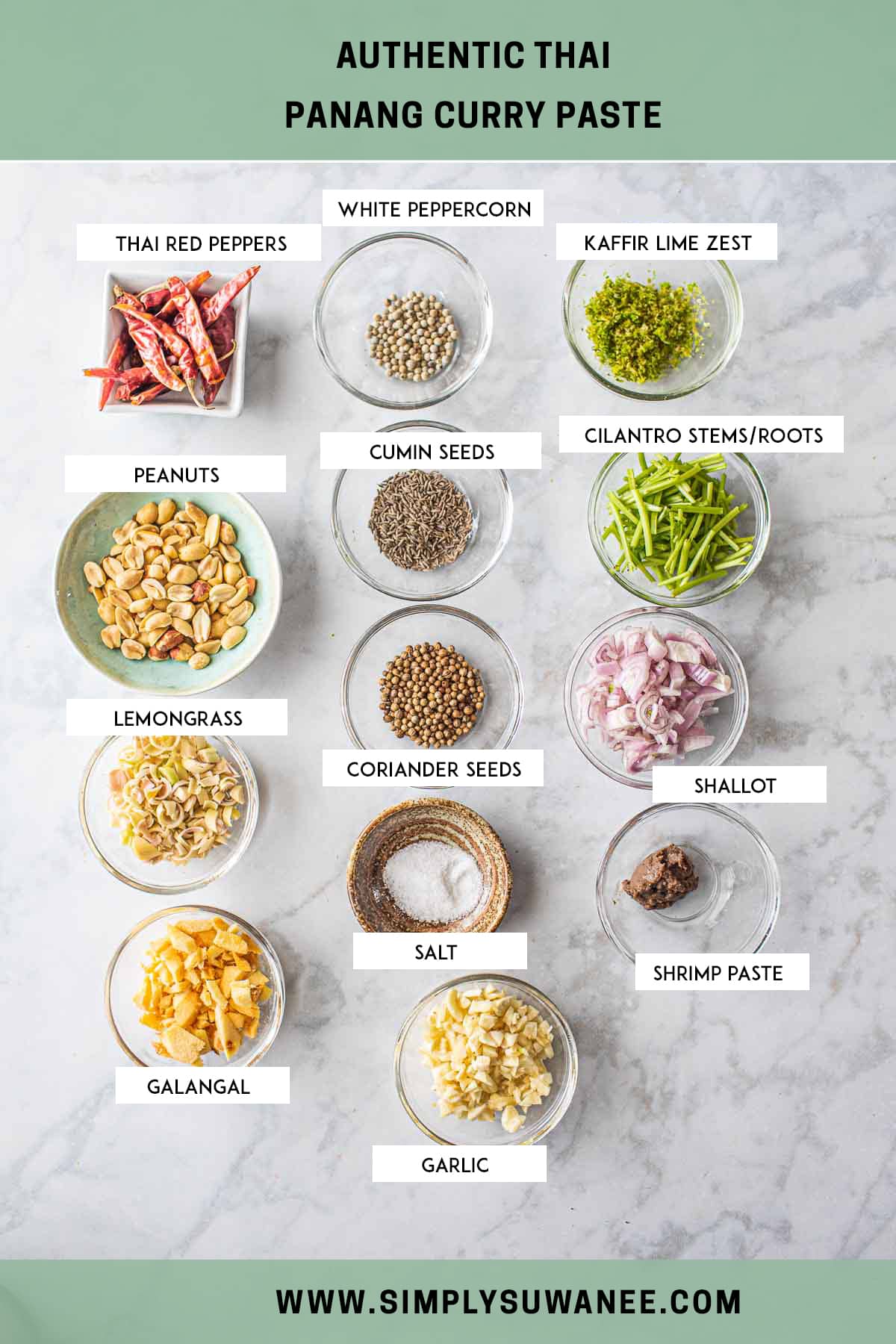
These dry spices below can be found at your local Asian grocery store. Buy them in whole seeds rather than powder for a more authentic flavor and freshness. If using powdered spices instead of whole, cut the amount to ½ the serving of what the recipe called for.
- Dried red chilies. Use these recommended dried chilies. The spicy ones are the Thai chilies like the Thai bird’s eye chilis, Thai long spur chilies (Prik Chee Fah), Piri Piri chilis, De Arbol, or dried Serrano chilis. The less spicy chili peppers are usually larger, like dried California/Anaheim chilis or Gualillo.
- Cumin seeds. Cumin adds a bold citrusy, earthy paste with a light peppery flavor.
- Coriander seeds. They look like white peppercorns but are entirely different from each other. The seeds are sold in small bags and can be kept for a long time in the pantry in a well-sealed glass jar.
- White peppercorns. These add a unique peppery flavor with a robust and earthly aroma. It also adds extra heat to food. Use sparingly if you don't like spicy food.
- Crushed Peanuts. Peanuts set Panang curry paste apart from other Thai curry pastes. Use coarsely ground peanuts to add a nutty flavor to the curry. The peanuts also help buffer the spiciness of the chilis used in the paste. Peanut butter is not recommended for the paste.
Fresh/Raw ingredients
These are the fresh ingredients used for making homemade Panang curry paste. Most of these fresh herbs can be found at the Asian store near you.
- Lemongrass. Fresh lemongrass is an idea but frozen, chopped, or lemongrass paste can be used too. Read more about Lemongrass and how to use it in Thai cuisine.
- Galangal. Use fresh or frozen galangal only for Thai curry paste recipes. Dried and powdered galangal is not recommended. Also, never substitute fresh ginger for galangal. Read more about Galangal in Thai cooking here. Find fresh or frozen galangal at your local Asian market.
- Kaffir lime zest. This one ingredient is near impossible in the US, even in well-stocked Asian markets. See Kitchen notes for best substitutes.
- Cilantro roots or stems. Cilantro roots are also rare in the US. Use stems instead. Find the lowest and largest stems possible.
- Shallot. A must for many Thai curry pastes. Red onions are not recommended as substitutes.
- Garlic. Garlic is essential in making homemade Thai curry pastes. For best results, use fresh garlic cloves. Never powder.
- Salt. Salt helps preserve and adds flavor to your curry paste. Use kosher or Himalayan fine-grain salt. Never use fish sauce, soy sauce, or other salty sauces for making curry pastes.
- Shrimp paste. Make your curry paste authentic by never skipping Thai shrimp paste. The smell is strong, and adding umami and extra depth of flavor to your Panang curry paste is necessary.
See the recipe card for quantities.
How to make your Panang Curry paste
1. Using a food processor
I recommend using a food processor for your first time making homemade massaman curry paste. The next time you do it, try the mortar and pestle method. The best way to make the paste is to plan out what ingredients you need to grab at the Asian market and which ones to grab at your local grocery store. Once you have all your ingredients, chop them into small pieces, and you are ready to make the best Panang curry paste!
Step 1. First step. Remove the seeds and stems of the dried chilis. Soak in warm water for 15-20 minutes until soft. Adjust the chilis according to your taste buds' preference for heat.
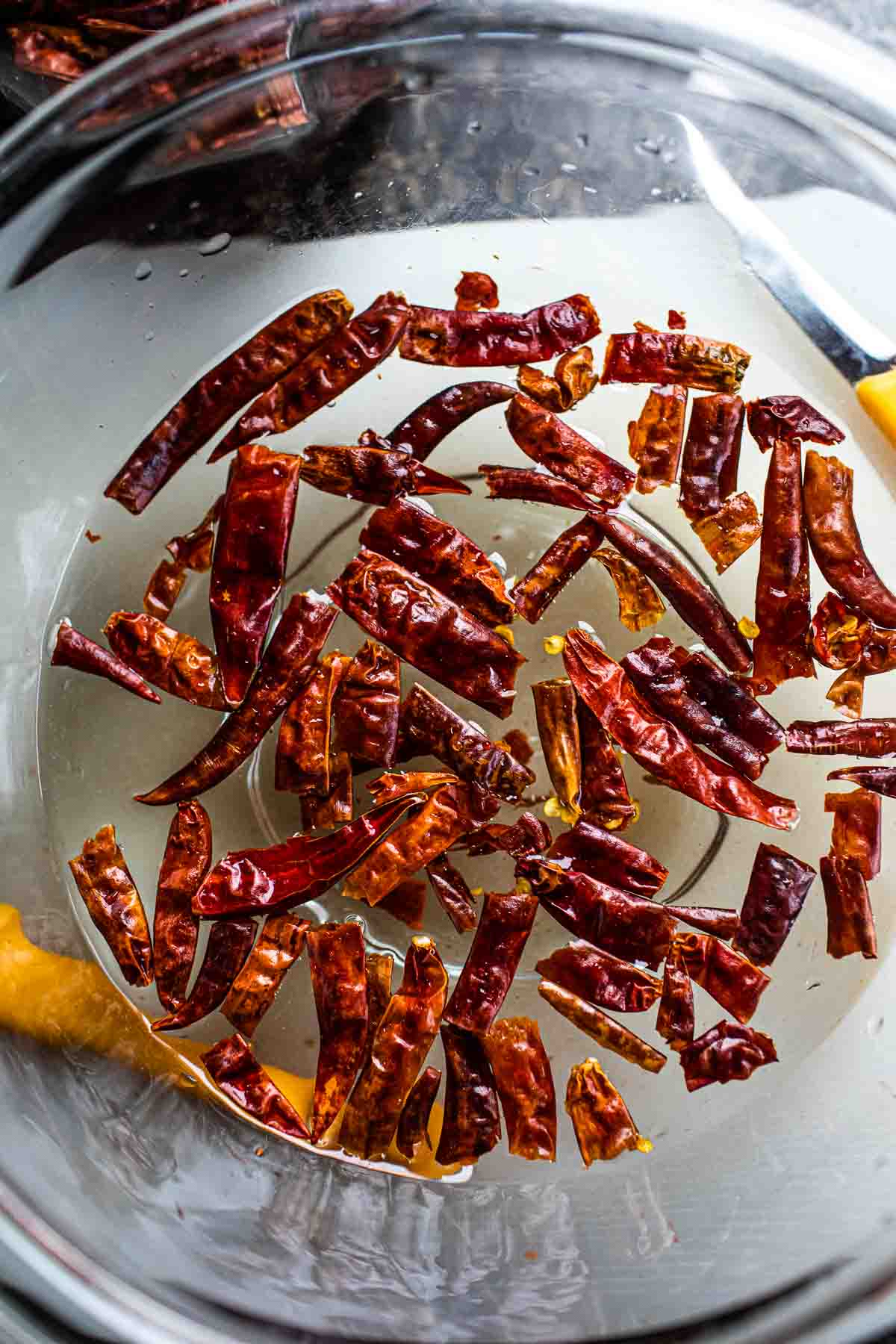
Step 2. Toast the dry spices, coriander seeds, cumin, and white peppercorn on medium heat until fragrant for 2-3 minutes. Using low heat with longer toasting time is fine, too, to prevent burning. Remove the toasted spice from a pan, and transfer to a plate. Let cool.
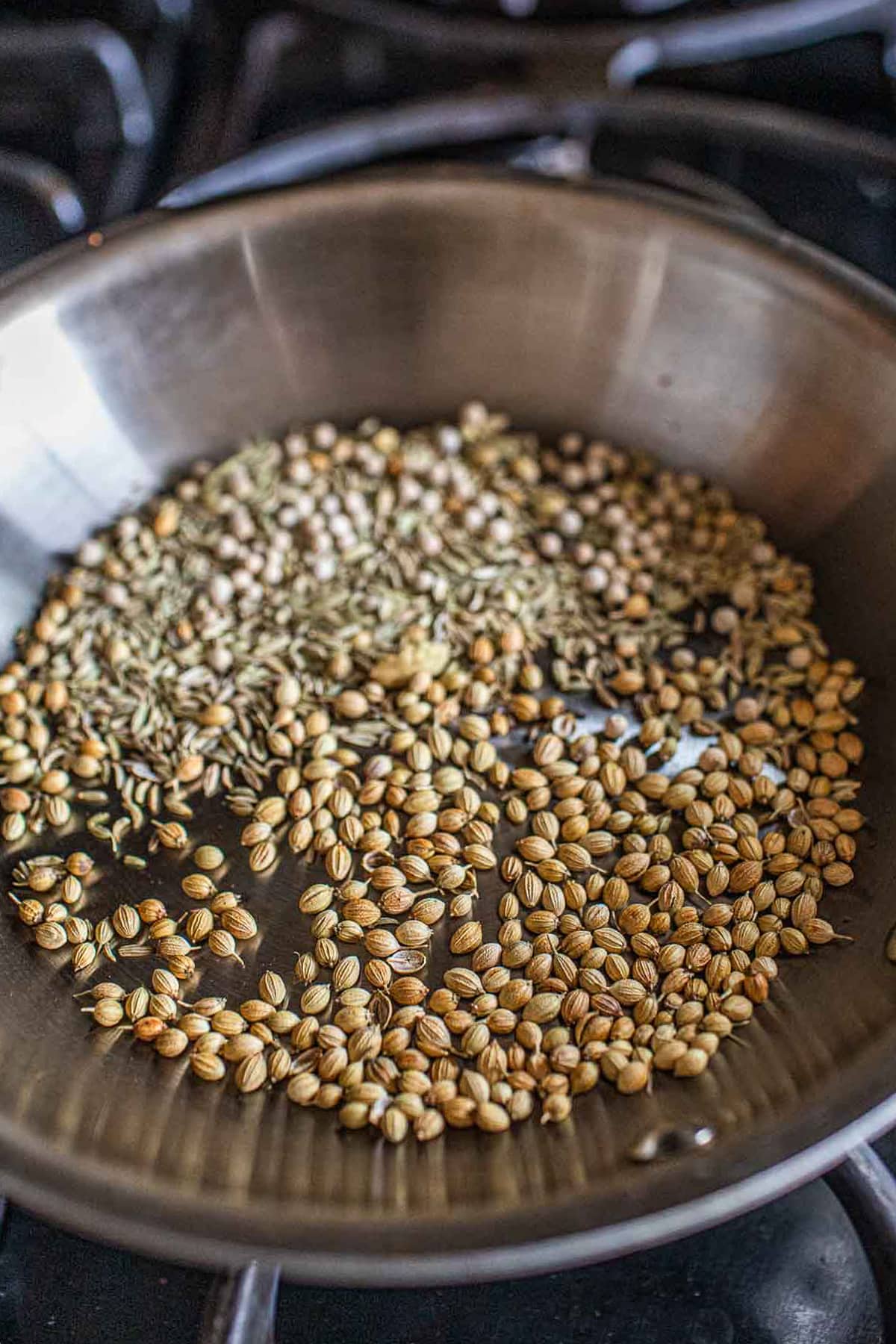
Step 3. Use a spice grinder or a small mortar and pestle to ground the toasted spices to a powder.
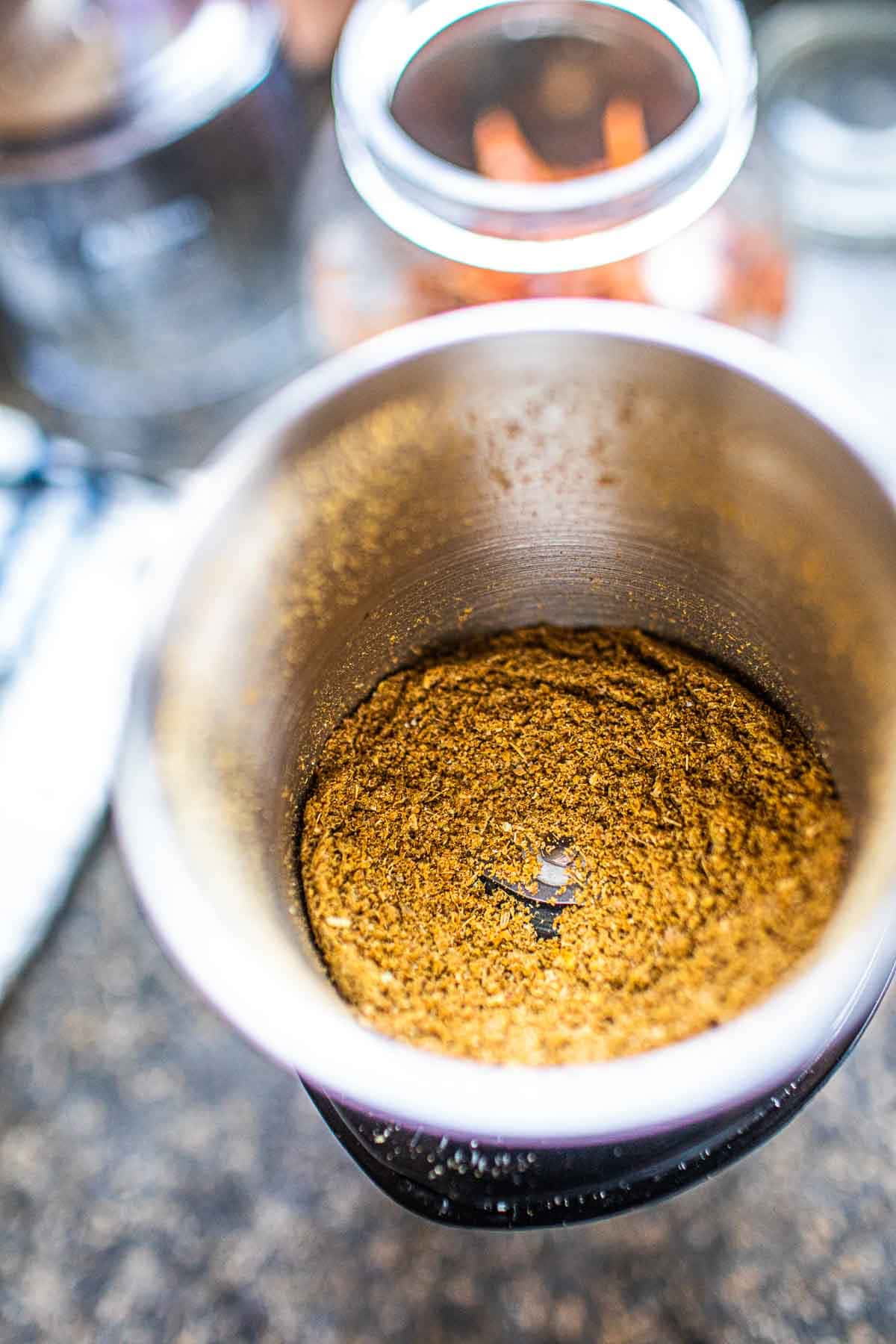
Step 4. Drain the chilis and pat dry. Add the soaked chilies and the rest of the ingredients to a food processor. Use 1 tablespoon of water to help turn the blades.
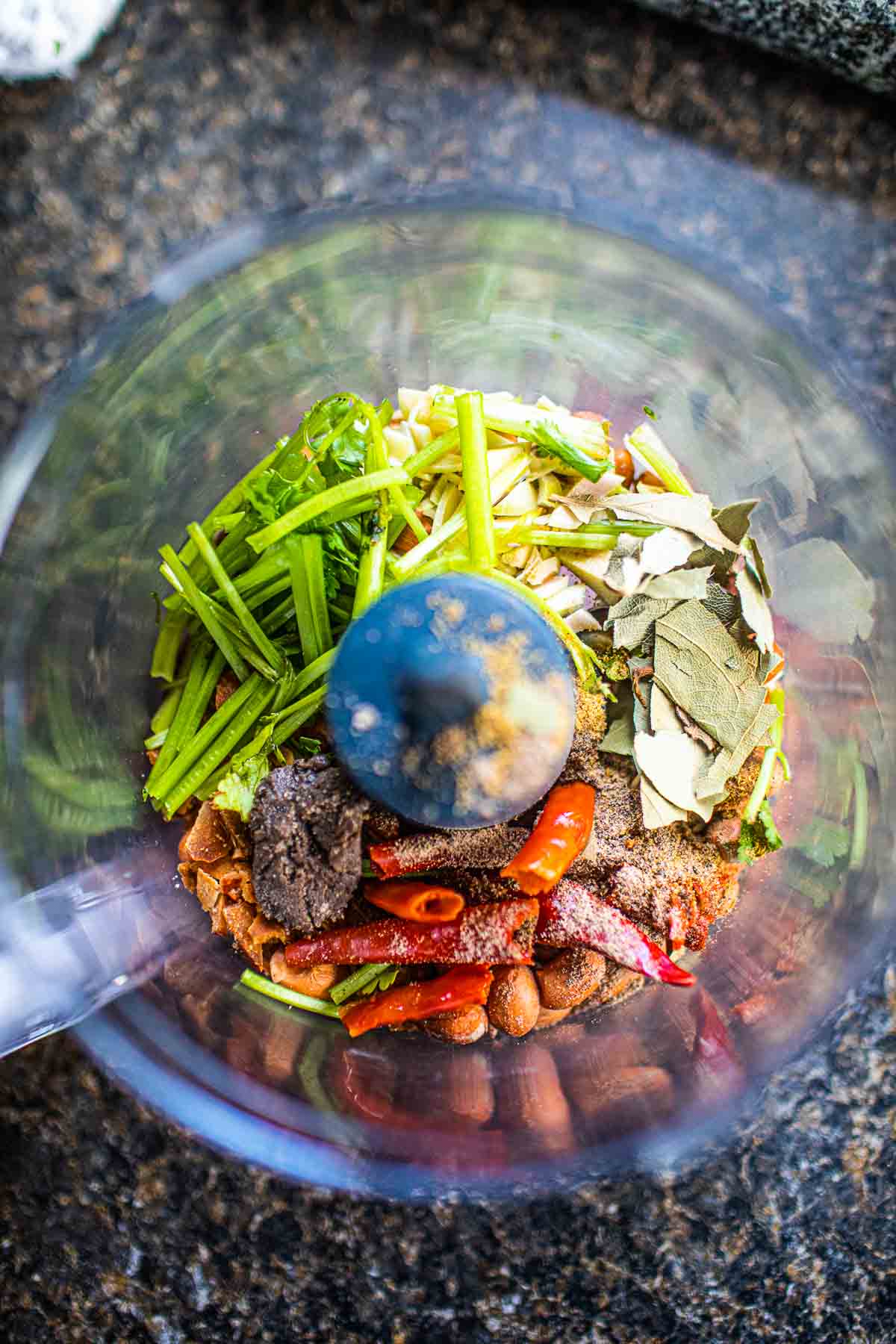
Step 5. Pulverized all ingredients into a smooth paste. Add a little bit more water as necessary. Your paste is ready! (: Store unused paste in a glass jar, in the fridge for up to 14 days, and in the freezer for up to 4-6 months.
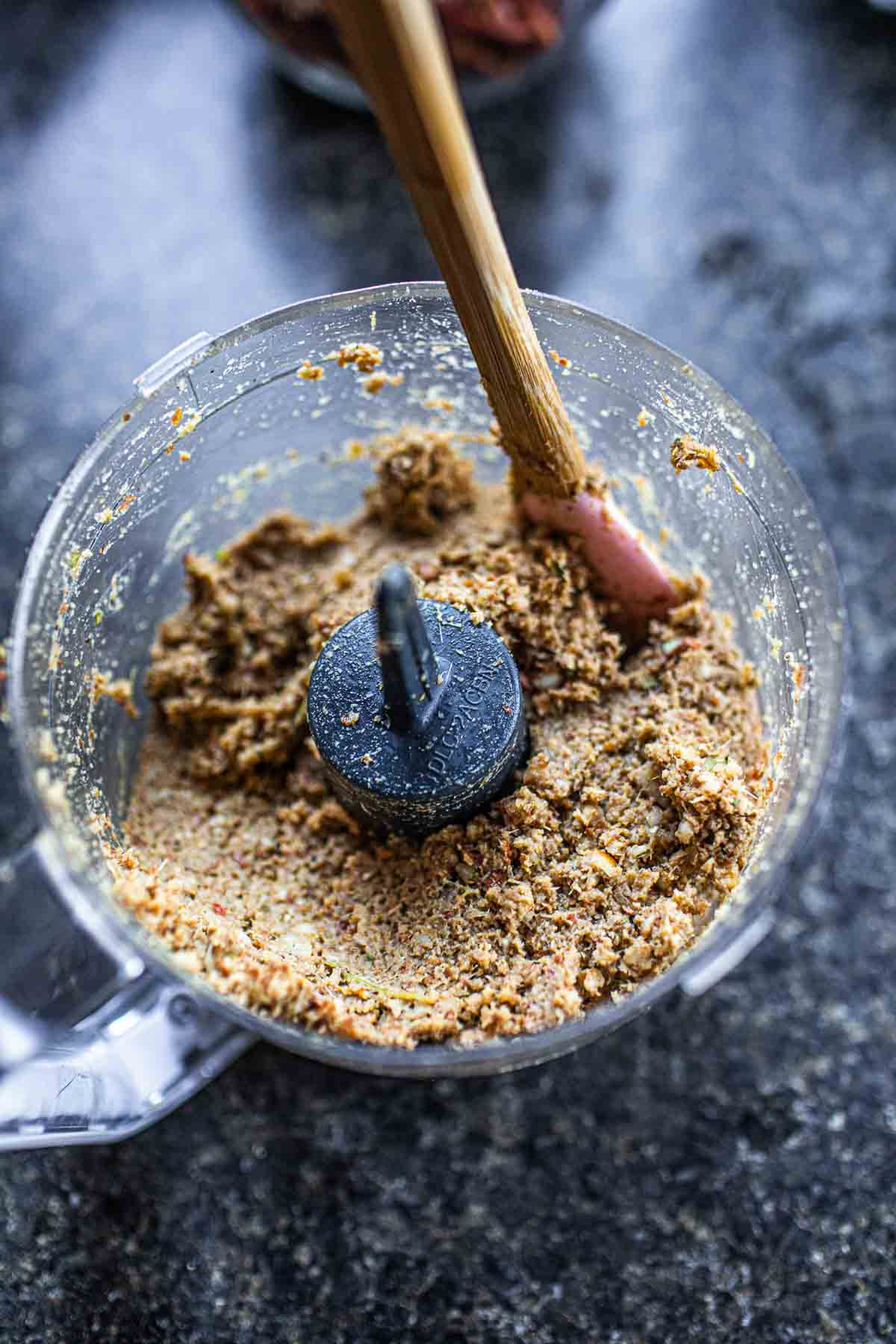
2. Using a mortar and pestle
This is the traditional way of making curry paste. Purist Thai cooks swear this method is the best way to make curry pastes.
A solid stone mortar and pestle is a must for this method to use to extract oils from fragrant herbs. When pounding these herbs, it's easier to start with the more fibrous and sturdy herbs and then move to softer ones towards the end. Use only 2-3 herbs at a time, or the mortar will become too full and difficult to pound the ingredient. Fold a kitchen towel under the mortar to keep the noise down and protect your counter.
Step 1. Remove the stems and seeds of the chilis, and soak the chilis in warm water for 15-20 minutes or until soft.
Step 2. Toast the dry spices for 2-3 minutes on medium to low heat until fragrant. Transfer to a plate to cool.
Step 3. Drain and pat dry the soaked chiles. Cut into 1-inch pieces, and add into the mortar with the salt. Start pounding with a pestle until smooth.
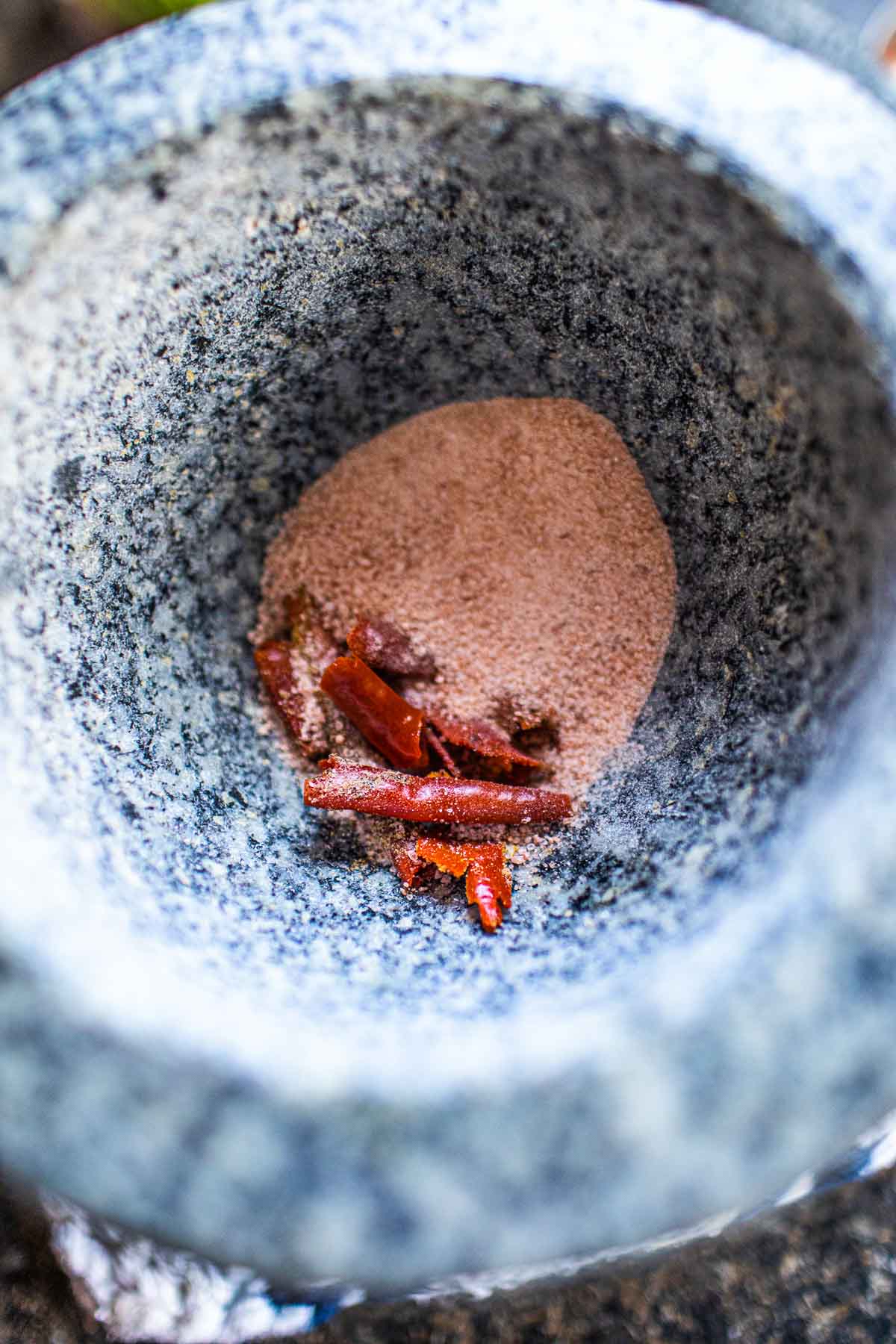
Step 4. Add the chopped galangal and lemongrass. Pound until you have a smooth paste.
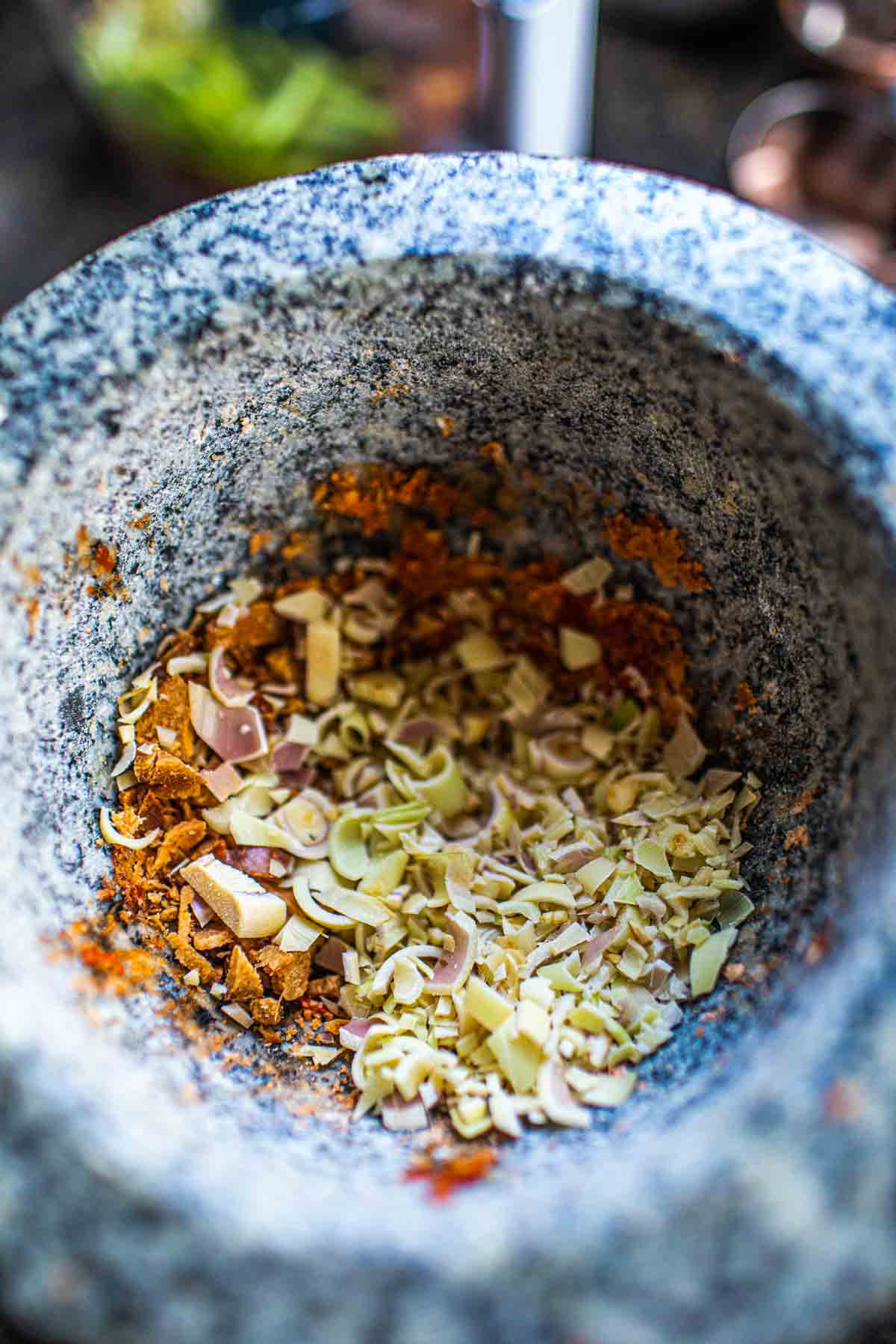
Step 5. Add garlic and shallot, and cilantro stems. You know what's next. Pound away again. (:
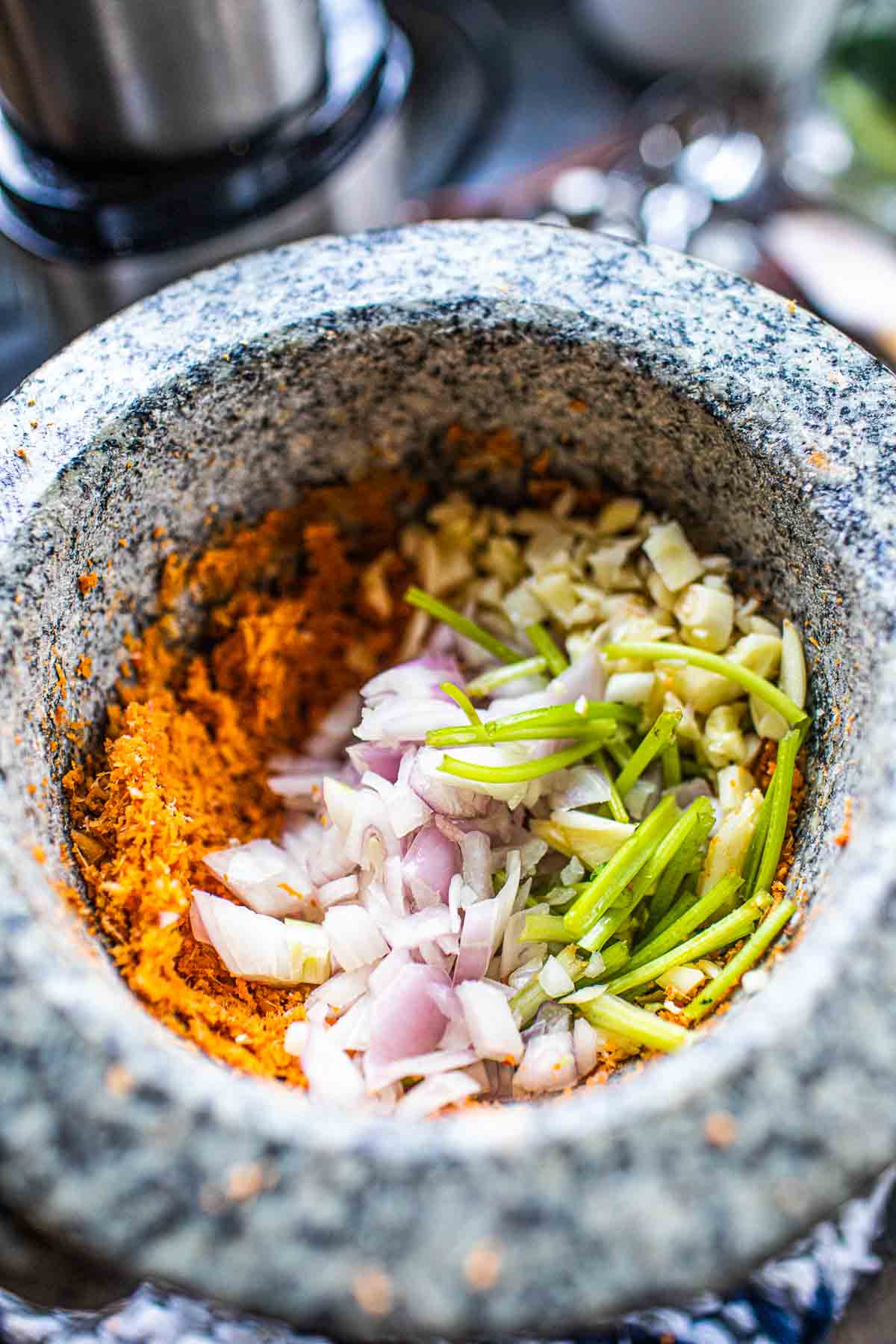
Step 6. Add the toasted ground spices and pound well until well blended.
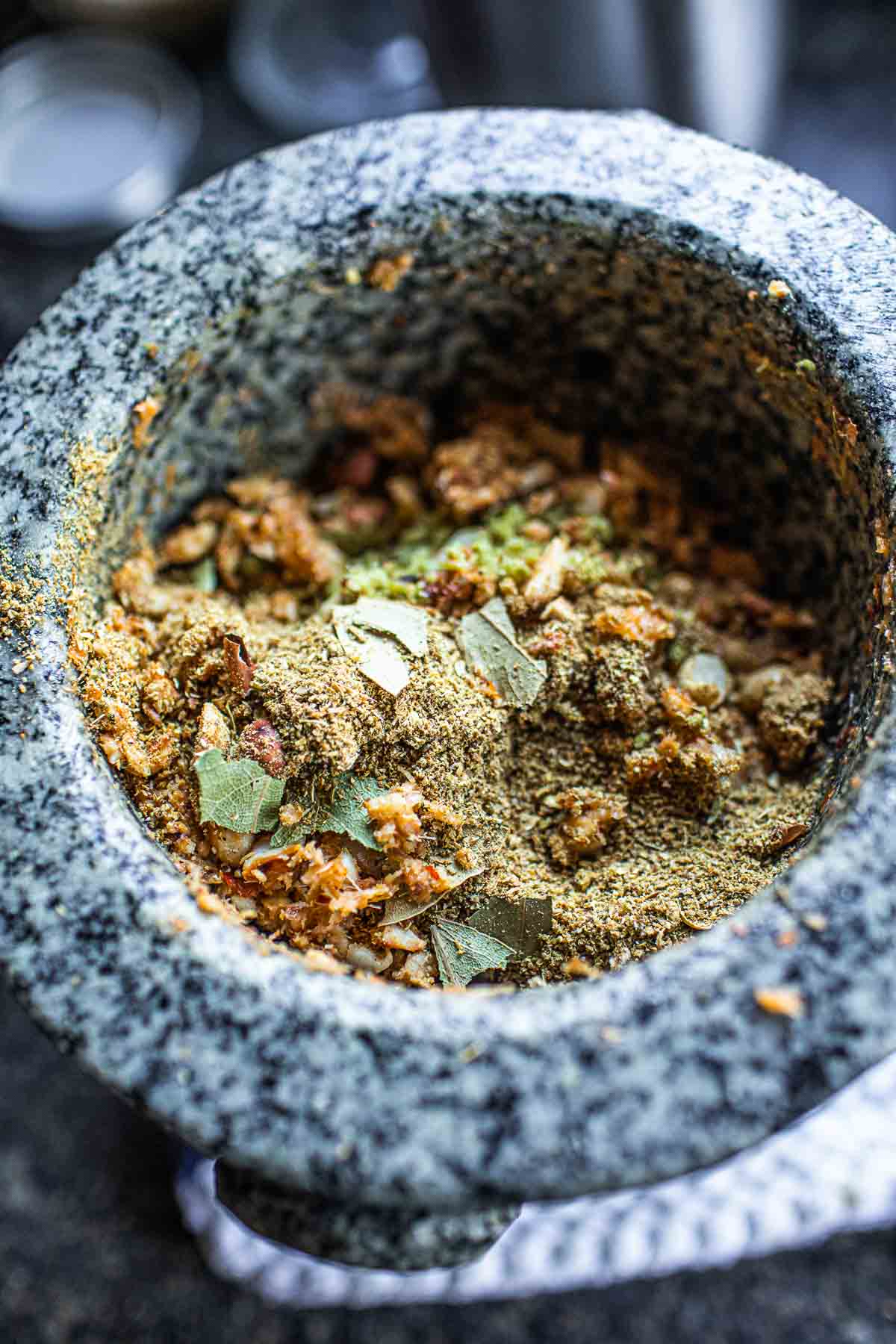
Step 7. Add the peanuts and pound away until you have a smooth paste.
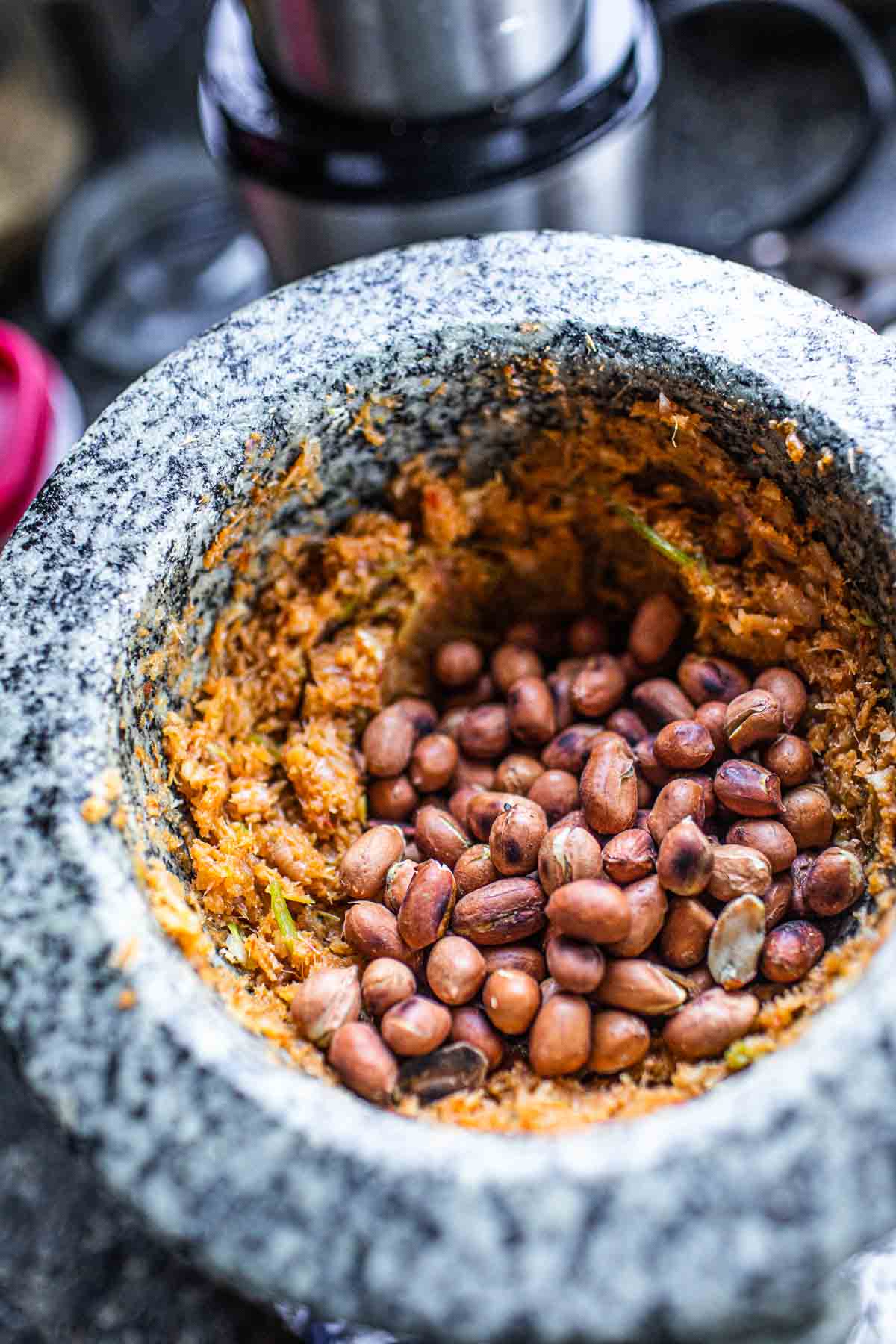
Step 8. Last, add the shrimp paste and mix it well with the curry paste for the last ingredient. There is not much pounding here as the paste is already soft. That's it. You just made your curry paste! Good work! Enjoy your new authentic Panang curry paste recipe!

Helpful kitchen notes and tips
- If you cannot find fresh kaffir limes, the following are good substitutes I recommend. Use 1 teaspoon of regular lime zest and add 3-4 fresh Kaffir lime leaves. The fresh leaves of kaffir limes have a similar fragrance to the key limes. Read more about Kaffir lime leaf and substitute here.
- Adjust the spice level of your Panang paste by reducing the chilis. Spur chilis and bird's eye chiles are spicier than large ones.
- Use kitchen gloves to remove the seeds of the chilis. The oils from the seeds can cause a bad burn to your skin.
- The longer the chilis are soaked, the more vibrant red my paste is. Very satisfying and pretty! But never go over 1 hour as the chilis will get too soft or mushy, especially if used in the mortar and pestle method.
- Use red bell peppers without adding heat for a more vibrant color in your curry pastes.
Variations
- Add bay leaves for extra flavor—no need to toast the leaves. Only break them up into rough pieces.
- Toast your peanuts and dried chilis before use to add extra flavors and aroma!
- Use veggie mites instead of shrimp paste to make your vegan Panang curry paste.
Storage
- Freeze the leftover paste in small portions. Use ice cube trays and once frozen, remove and store in a glass jar or Ziploc bags for easy thawing and measurement when wanting to make a delicious Panang curry.
Substitutes
I like making my paste best when making curries. A good Panang curry paste greatly affects how your curries turn out.
I also know making your Thai curry pastes seem intimidating. Below is a list of store-bought curry pastes I've used and recommended. When in doubt, look for brands that are products of Thailand. (Affiliate links for these curry pastes)
- Mae Ploy massaman curry paste. Mae Ploy paste is heavy on the salty side. Mae Ploy is my 1st choice of store-bought Panang curry pastes.
- Aroy-D brand. It tends to be on the saltier side.
- Maesri brand. The Maesri brand tends to be on the sweeter and sour side.
Helpful kitchen tools for making Panag curry paste
- A solid stone mortar and pestle with at least a 6-inch opening.
- Food processor
- Spice grinder
- Kitchen scissor
- Small glass jars for storing any leftovers
- Food labeling

Frequently Asked Questions
The panang paste is different from other Thai curries with the added crushed peanuts in the paste. The peanuts add a nutty, creamy, lightly sweet flavor that sets Panang curry paste apart.
No. Panang curry paste is not the same as red curry. Though some spices and herbs are similar in curry pastes, there are a few differences. The biggest difference is using peanuts in the Penang curry and curry paste, while red curry doesn't contain peanuts.
Panang curry is the mildest curry of the red and green curry recipes. Panang curry is typically made with minimal ingredients with no vegetables added, while red and green curries can add vegetables to individual food preferences. Green curry pastes are made with green chilies, while Panang and Red curry pastes are made with dried red chilis.
Yes, Panan curry paste does very well in the freezer. Keep the curry paste in an airtight container in the freezer for up to 6 months.
More Thai recipes to try
- Authentic Thai yellow curry paste
- Authentic Thai green curry paste
- Authentic homemade Thai Red curry paste
- Prik Khing curry paste
- Choo Chee curry pastes
- Thai basil fried rice
- Authentic Massaman curry paste
- Massaman chicken with sweet potatoes
** Love a recipe you've tried? Please leave a 5-star ?rating in the recipe card below and a review in the comments section further down the page. Or follow me on Facebook, Pinterest, or Instagram! **
Print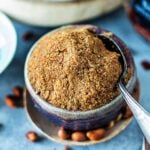
The Best Authentic Thai Panang Curry Paste Recipe
- Total Time: 35 minutes
- Yield: 1 ½ cups
- Diet: Gluten Free
Description
Learn how to make the best authentic Thai Panang curry paste recipe with two easy methods. Experience intense aromatic and fresh flavors like never before in Thai curry pastes!
Ingredients
- 1-8 dried red chilies. Stems and seeds removed, soaked, and chopped into small pieces
- ½ tablespoon salt
- 1 tablespoon cumin seeds
- 1 tablespoon white peppercorns
- 1 ½ tablespoon coriander seeds
- ⅔ cup unsalted whole peanuts, dry roasted is recommended
- ¼ cup lemongrass, chopped small
- 1 tablespoon galangal, chopped small
- 2 teaspoons kaffir lime zest
- 2 tablespoons cilantro roots or stems cut into 1-inch stems
- ⅓ cup shallot, chopped small
- ¼ cup garlic, chopped small
- 1 tablespoon shrimp paste
Instructions
Using a food processor
I recommend using a food processor for your first time making homemade massaman curry paste. The next time you do it, try the mortar and pestle method. The best way to make the paste is to plan out what ingredients you need to grab at the Asian market and which ones to grab at your local grocery store. Once you have all your ingredients, chop them into small pieces, and you are ready to make the best Panang curry paste!
- First step. Remove the seeds and stems of the dried chilis. Soak in warm water for 15-20 minutes until soft. Adjust the chilis according to your taste buds' preference for heat.
- Toast the dry spices, coriander seeds, cumin, and white peppercorn on medium heat until fragrant for 2-3 minutes. Using low heat with longer toasting time is fine, too, to prevent burning. Remove the toasted spice from a pan, and transfer to a plate. Let cool.
- Use a spice grinder or a small mortar and pestle to ground the toasted spices to a powder.
- Drain the chilis and pat dry. Add the soaked chilies and the rest of the ingredients to a food processor. Use 1 tablespoon of water to help turn the blades.
- Pulverized all ingredients into a smooth paste. Add a little bit more water as necessary. Your paste is ready! (: Store unused paste in a glass jar, in the fridge for up to 14 days, and in the freezer for up to 4-6 months.
Using a mortar and pestle
A solid stone mortar and pestle is a must for this method to use to extract oils from fragrant herbs. When pounding these herbs, it's easier to start with the more fibrous and sturdy herbs and then move to softer ones towards the end. Use only 2-3 herbs at a time, or the mortar will become too full and difficult to pound the ingredient. Fold a kitchen towel under the mortar to keep the noise down and protect your counter.
- Remove the stems and seeds of the chilis, and soak the chilis in warm water for 15-20 minutes or until soft.
- Toast the dry spices for 2-3 minutes on medium to low heat until fragrant. Transfer to a plate to cool.
- Drain and pat dry the soaked chiles. Cut into 1-inch pieces, and add into the mortar with the salt. Start pounding with a pestle until smooth.
- Add the chopped galangal and lemongrass. Pound until you have a smooth paste.
- Add garlic and shallot, and cilantro stems. You know what's next. Pound away again. (:
- Add the toasted ground spices and pound well until well blended.
- Add the peanuts and pound away until you have a smooth paste.
- Last, add the shrimp paste and mix it well with the curry paste for the last ingredient. There is not much pounding here as the paste is already soft. That's it. You just made your curry paste! Good work! Enjoy your new authentic Panang curry paste recipe!
Notes
- If you cannot find fresh kaffir limes, the following are good substitutes I recommend. Use 1 teaspoon of regular lime zest and add 3-4 fresh Kaffir lime leaves. The fresh leaves of kaffir limes have a similar fragrance to the key limes. Read more about Kaffir lime leaf and substitute here.
- Adjust the spice level of your Panang paste by reducing the chilis. Spur chilis and bird's eye chiles are spicier than large ones.
- Use kitchen gloves to remove the seeds of the chilis. The oils from the seeds can cause a bad burn to your skin.
- The longer the chilis are soaked, the more vibrant red my paste is. Very satisfying and pretty! But never go over 1 hour as the chilis will get too soft or mushy, especially if used in the mortar and pestle method.
- Use red bell peppers without adding heat for a more vibrant color in your curry pastes.
** Thank you so much for visiting my blog! This is truly a passion for me. If you have enjoyed these recipes and appreciate the hard work I put into them, I would love it if you would share them with your friends! Your recommendation is the highest review I could hope for, and I’d appreciate it! **
- Prep Time: 20
- Cook Time: 15
- Category: Curries, pastes
- Method: Food processor, mortar and pestle
- Cuisine: Thai
Related
Looking for other recipes like this? Try these:
Pairing
These are my favorite drinks and cocktails to serve with my Thai food.

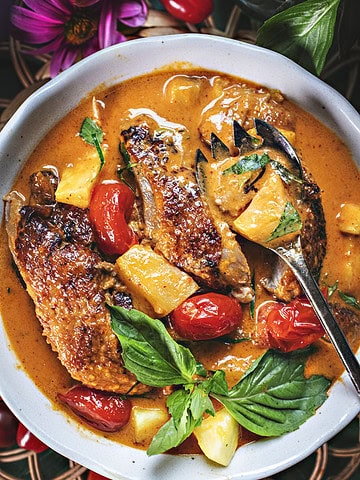
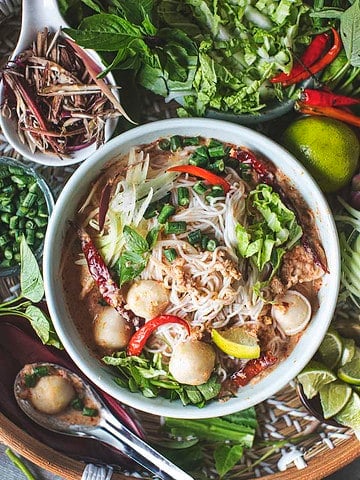
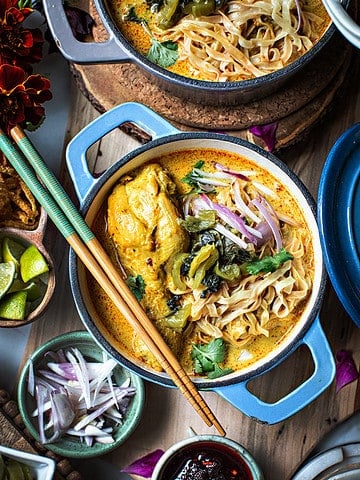
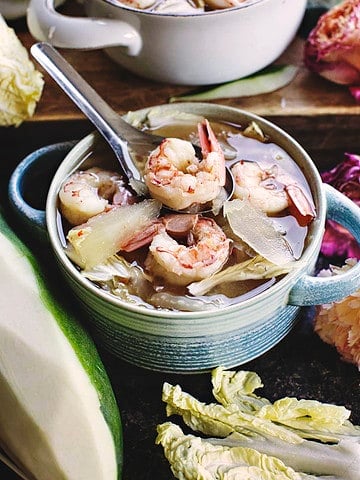
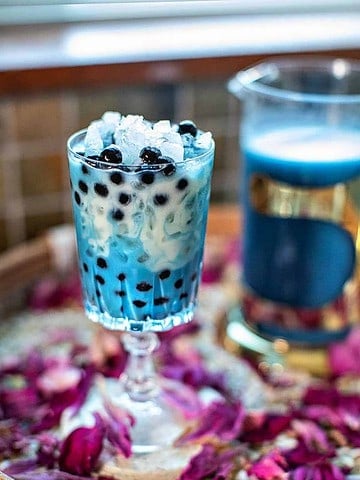
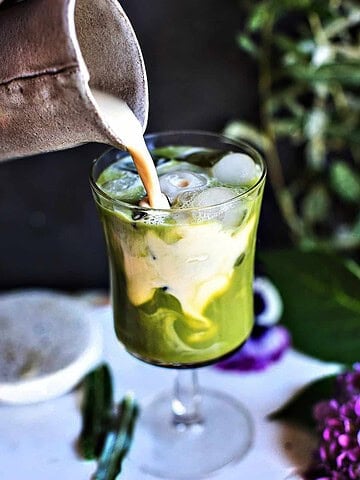
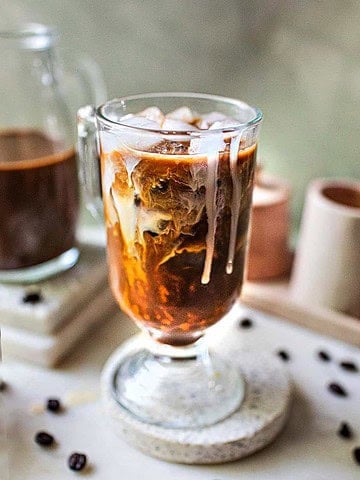
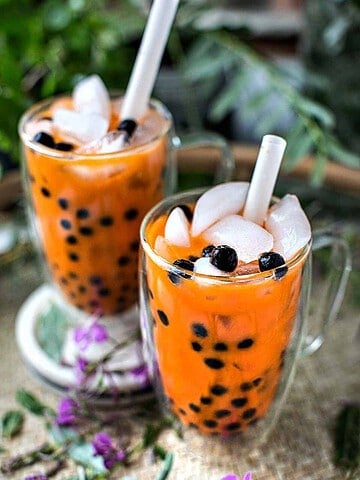
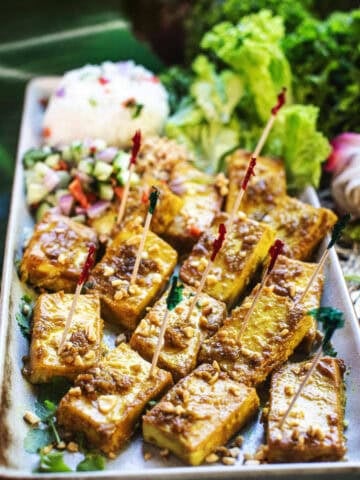
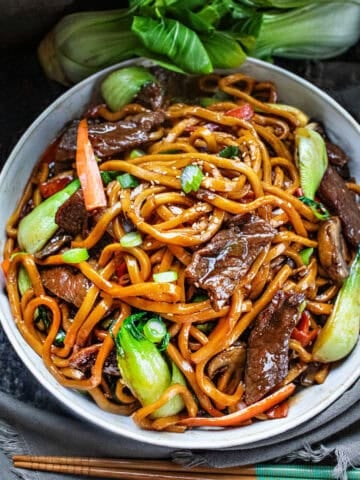
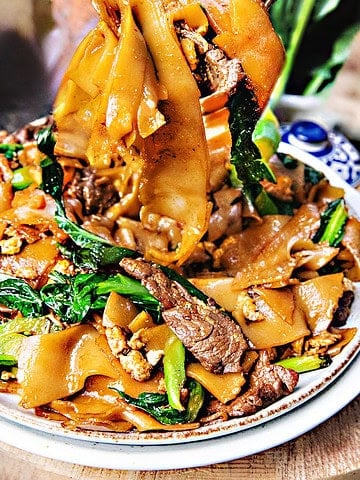
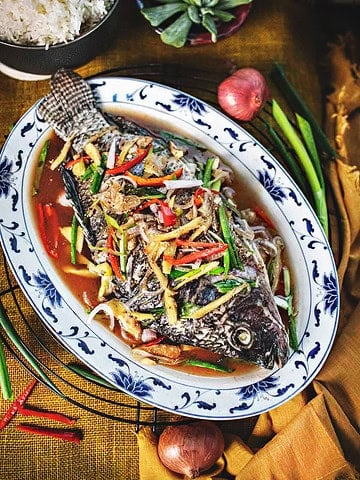
Leave a Reply